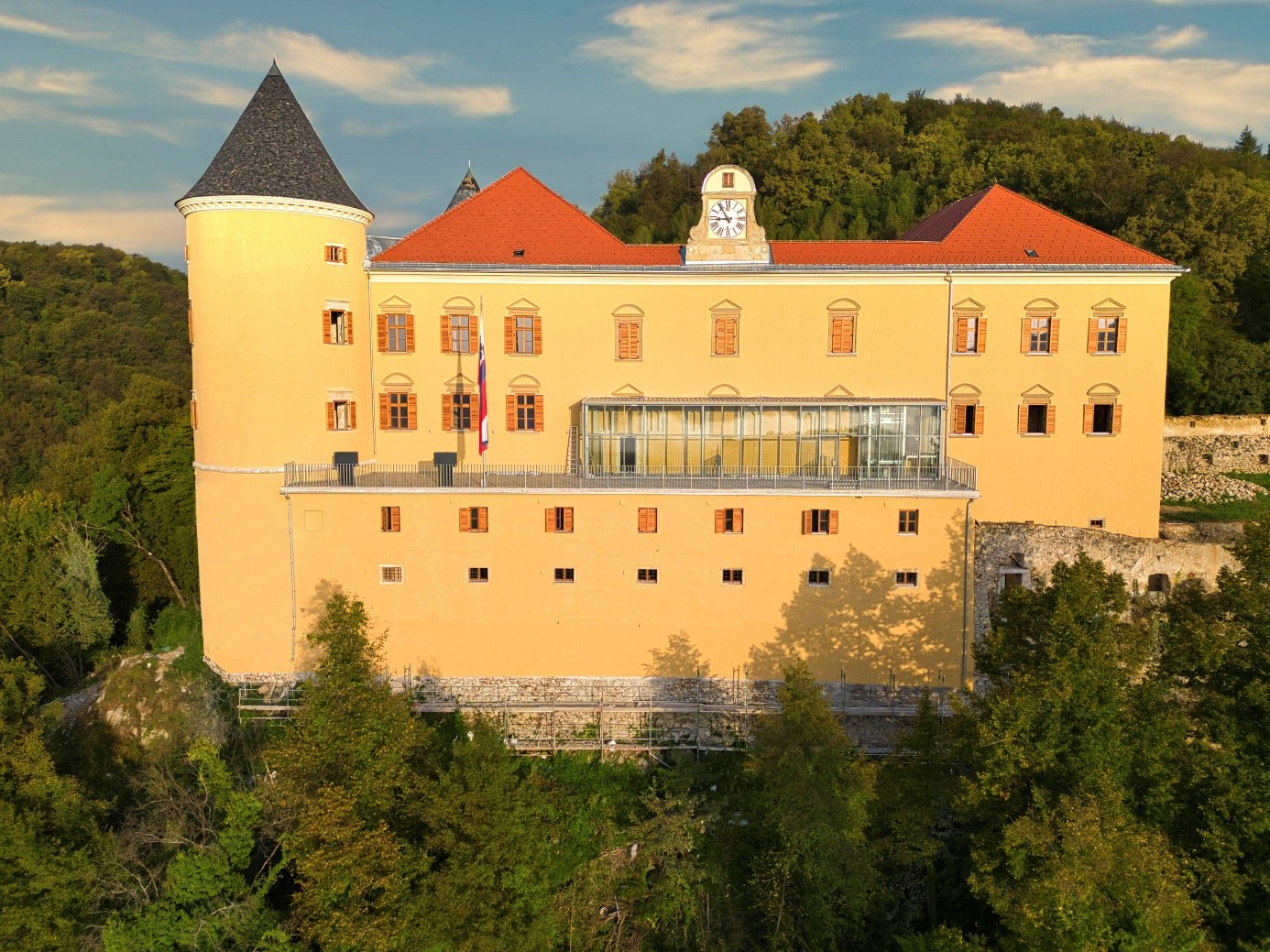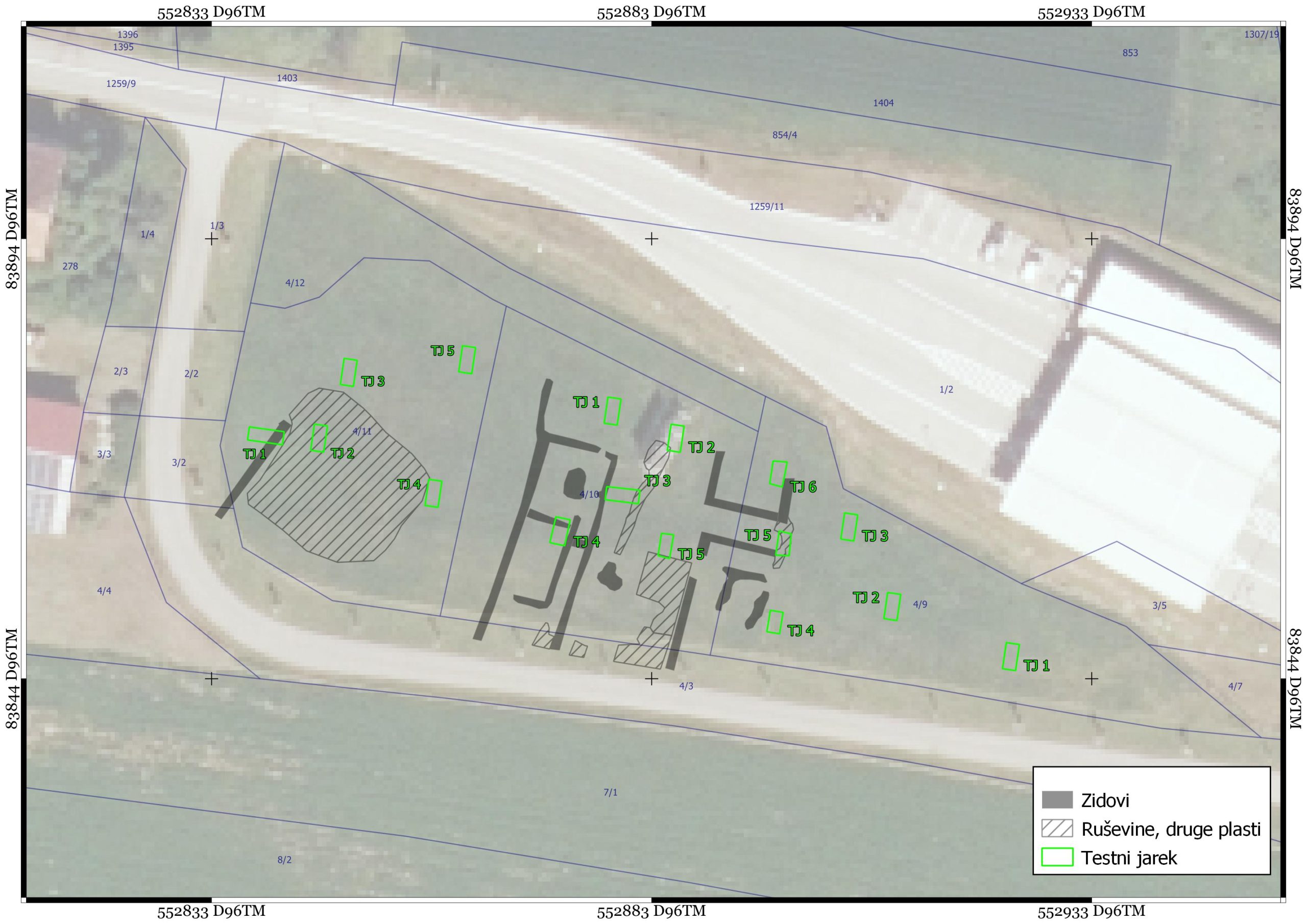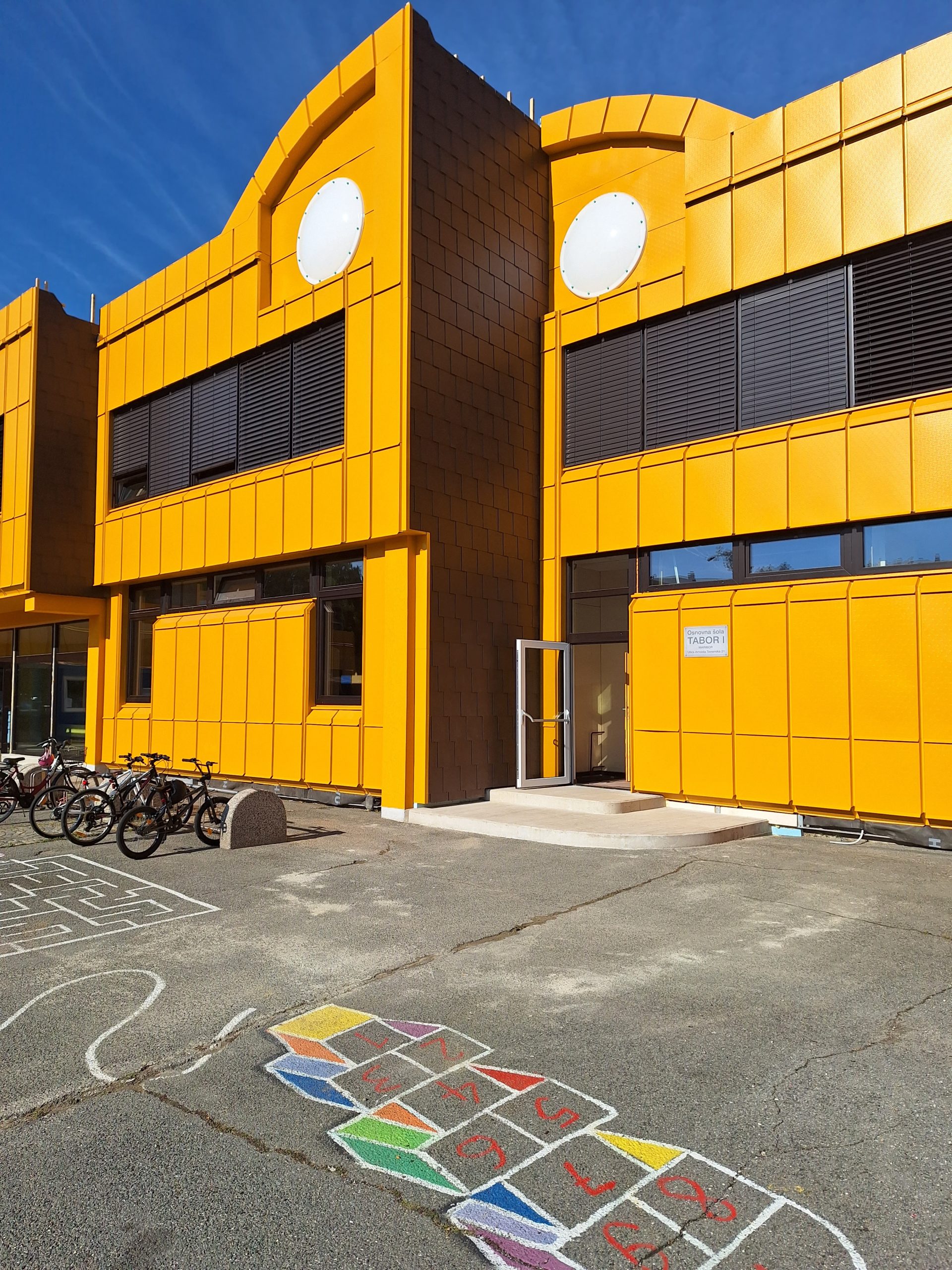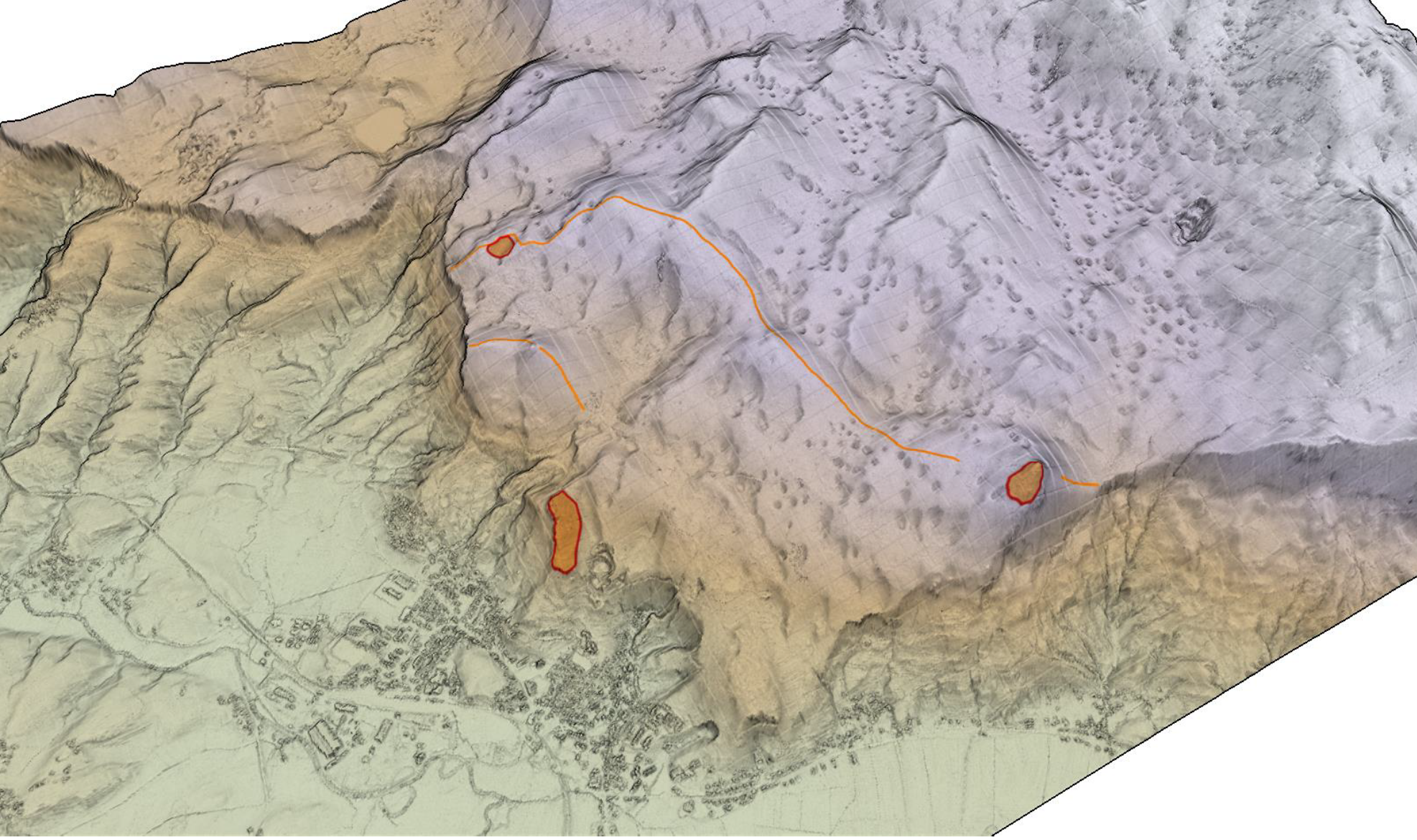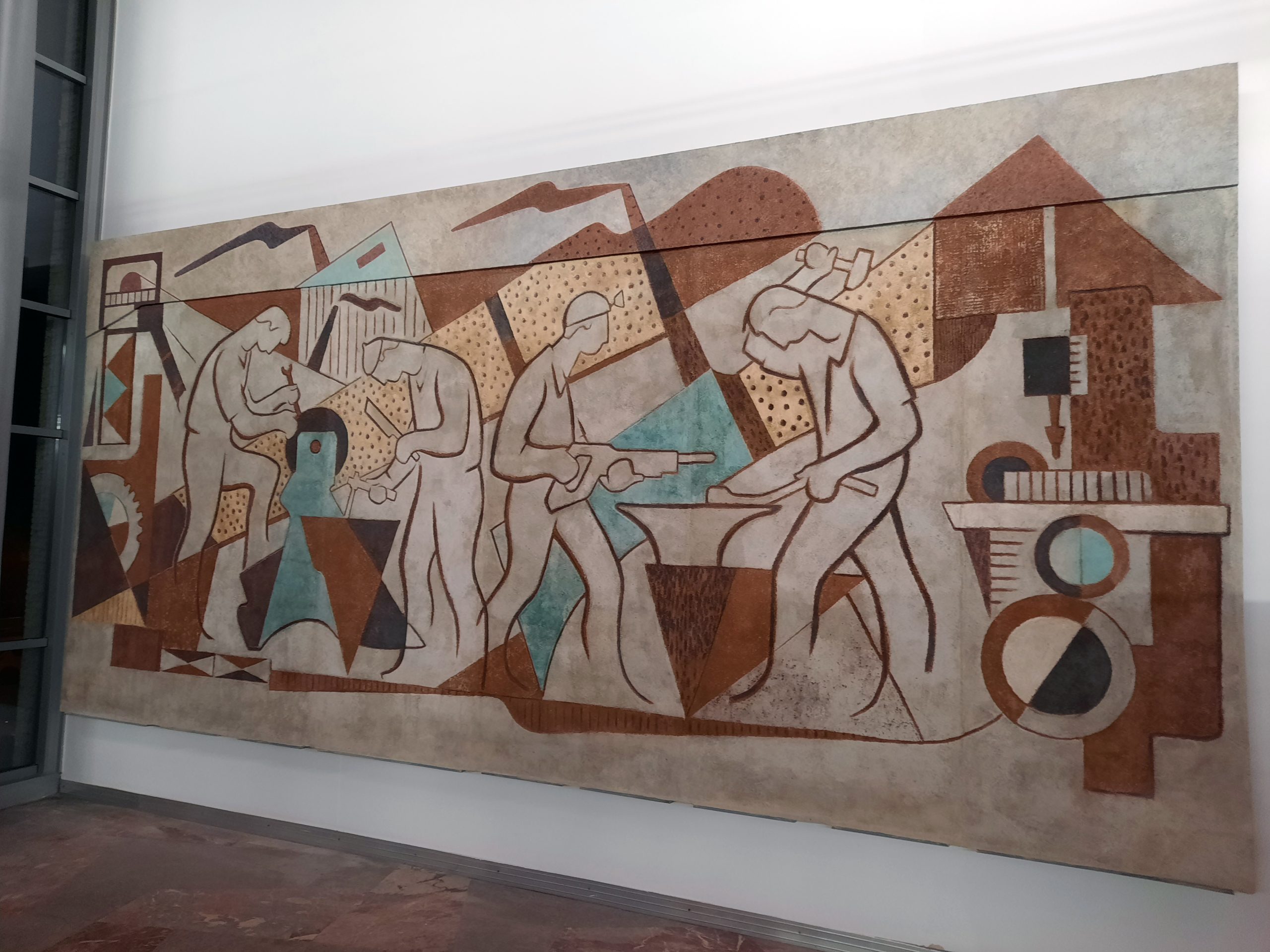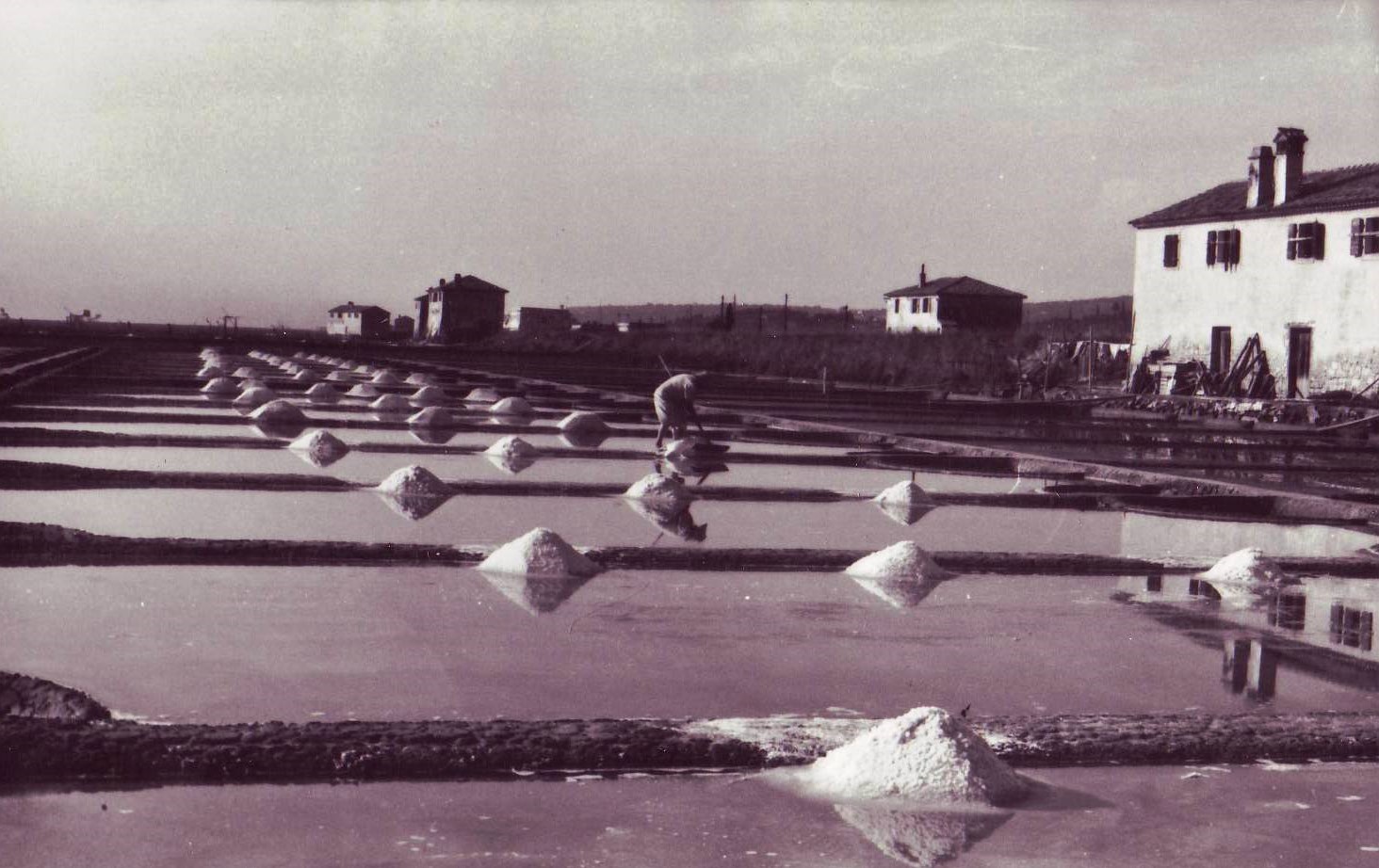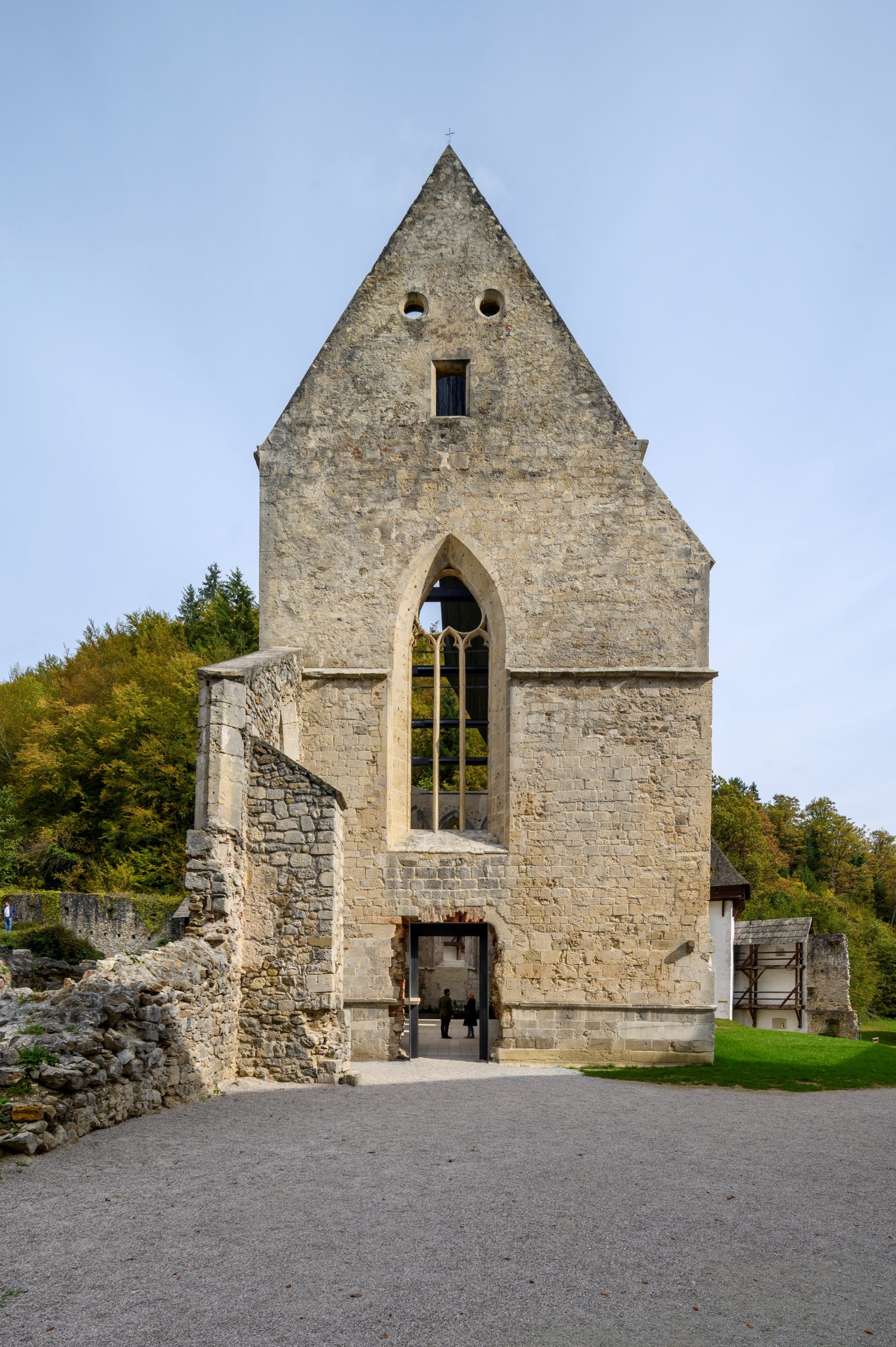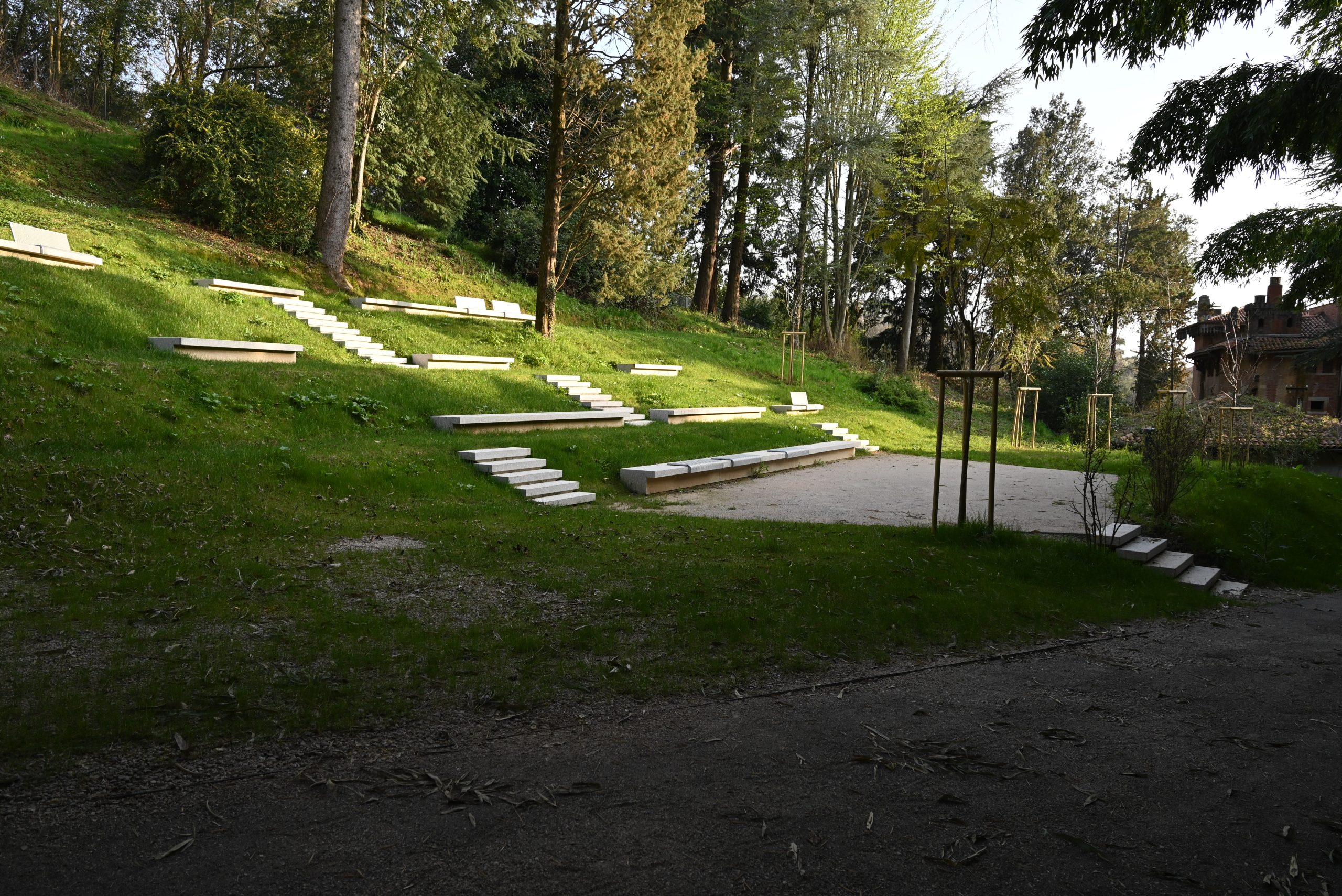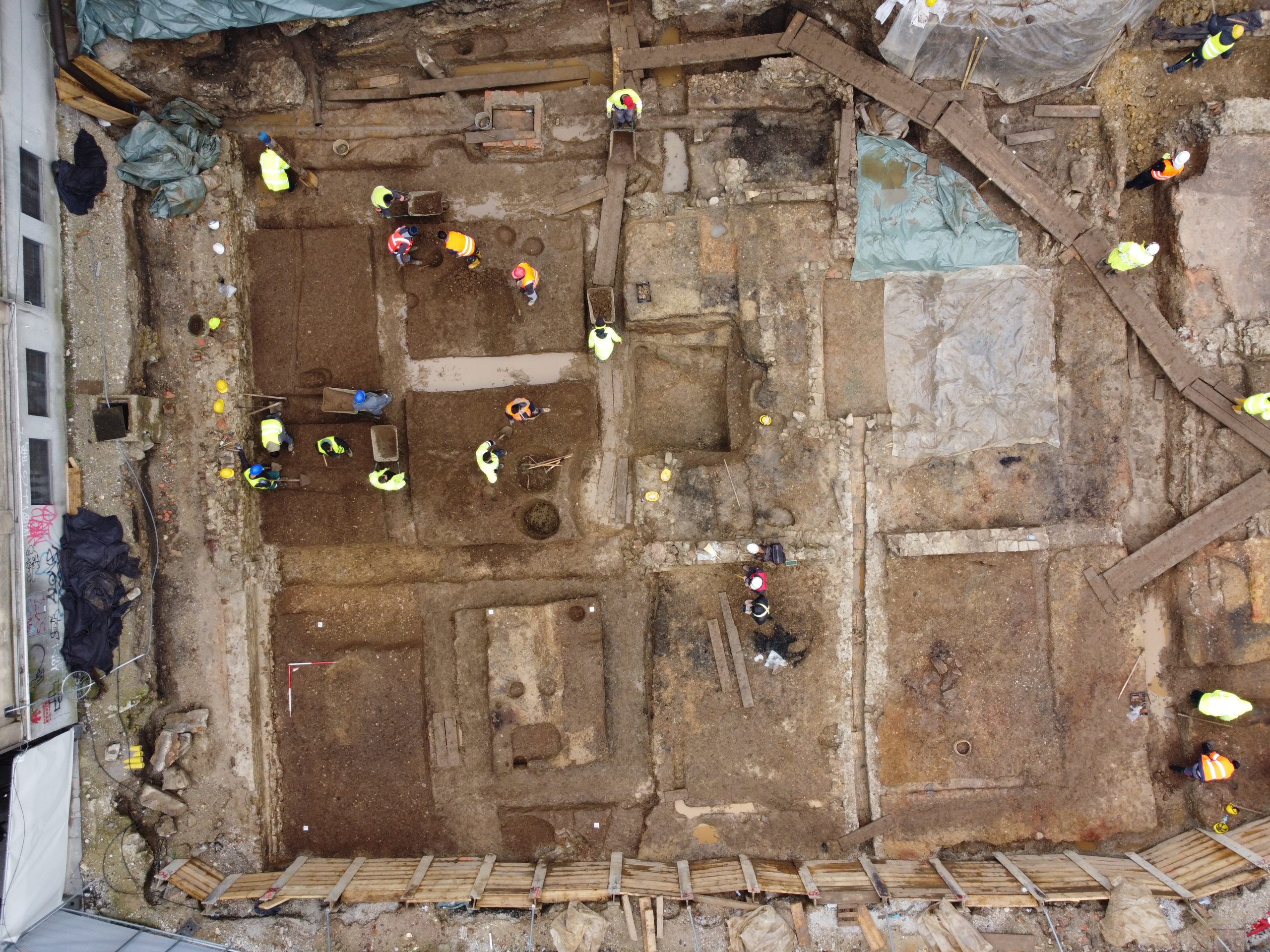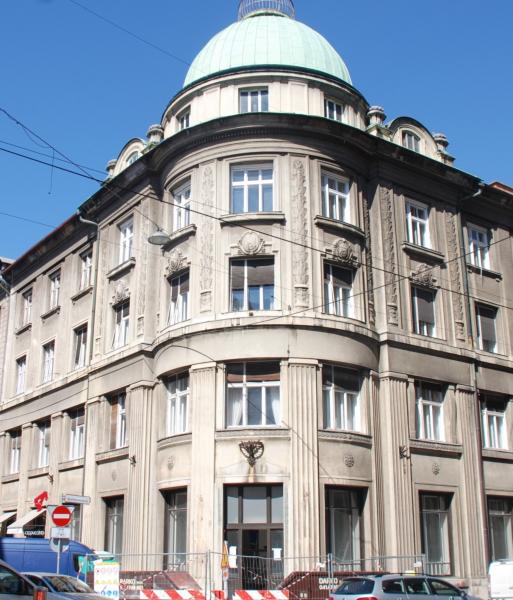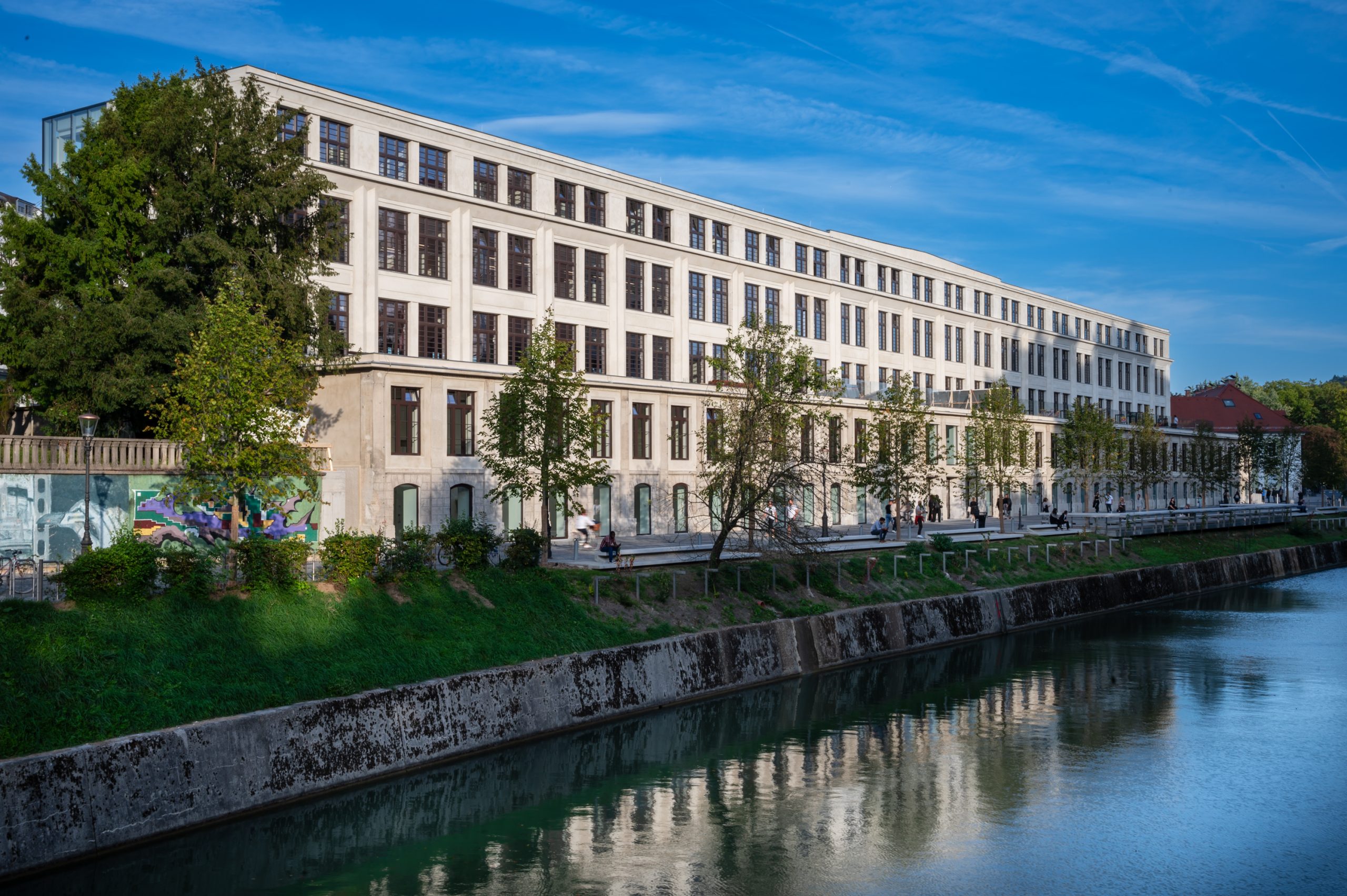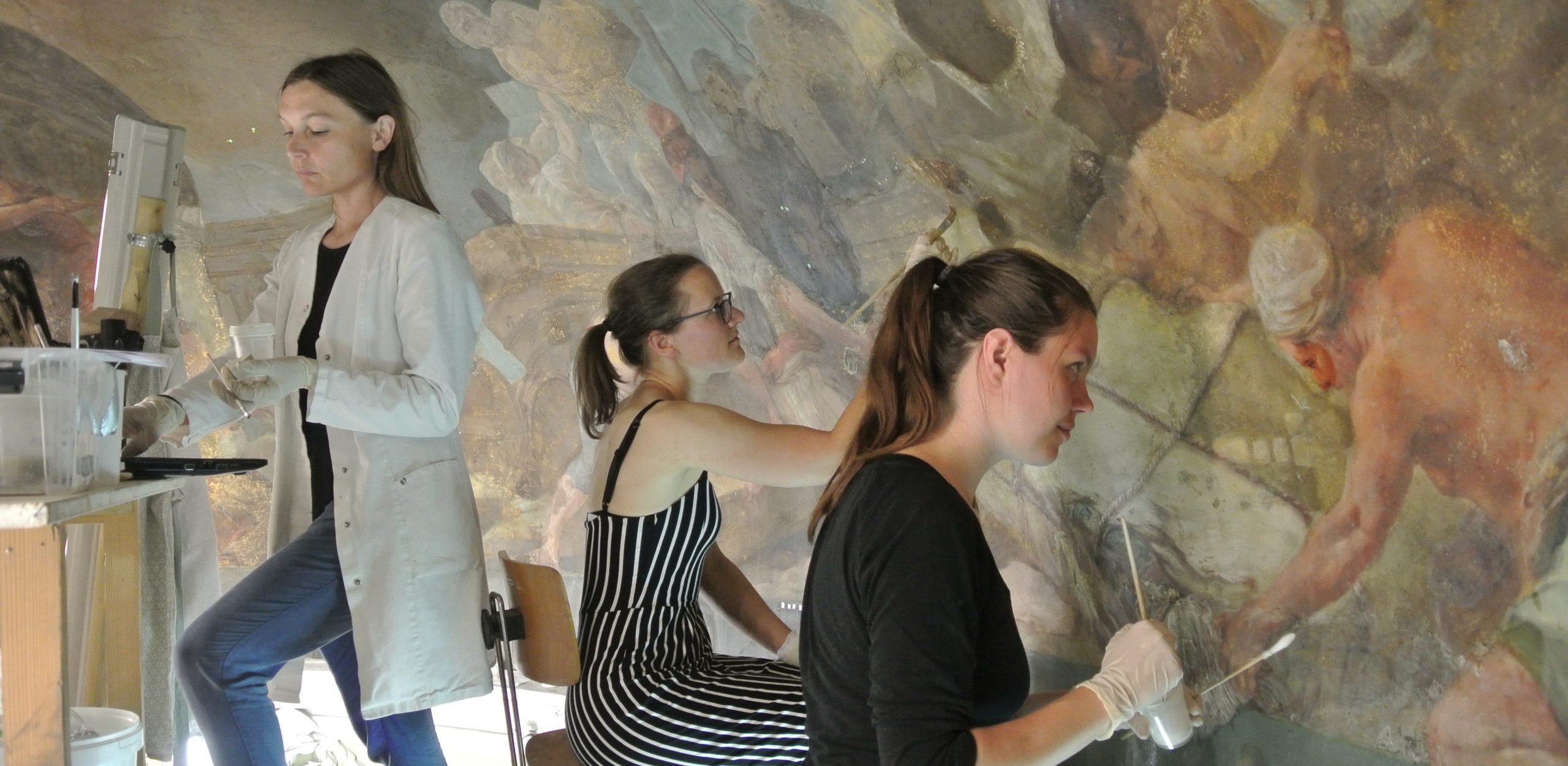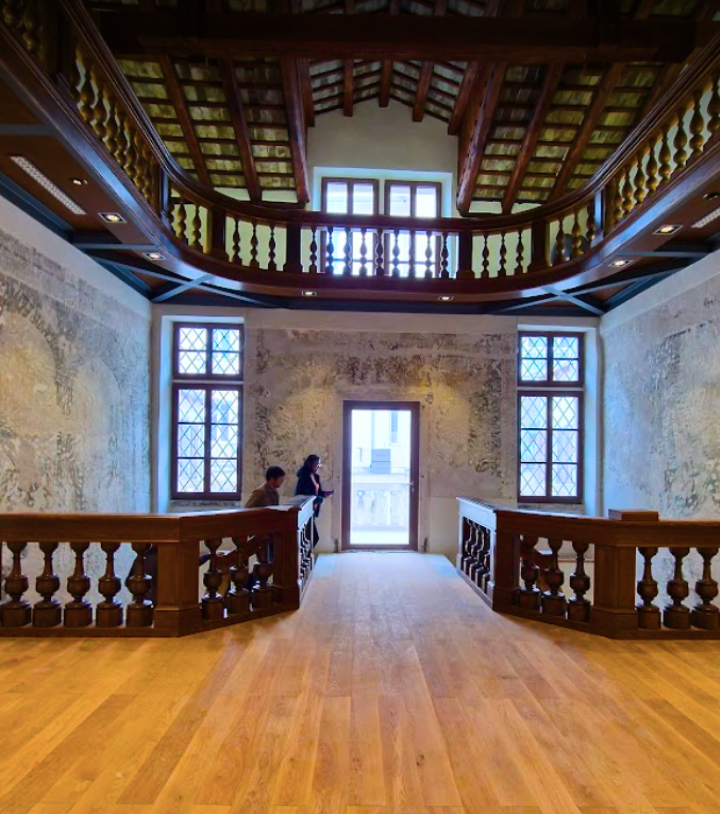Interested in cultural heritage, its protection and preservation? Read our news, subscribe to our newsletter, follow us on social media.
Wall paintings of St. Nedelja (Podrebri near Polhov Gradec)
In the summers of 2023 and 2024, the Department of Wall Paintings and Mosaics conserved and restored the painting of St. Sunday on the south wall of the Church of St. Elizabeth in Podrebro near Polhov Gradec. The Gothic painting from the first half of the 16th century was discovered and conserved and restored for the first time as early as 1966, when a protective roof was also put over it.














